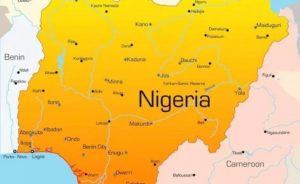Liberia: The Reburial of Doe and Tolbert – a Roadmap for National Reconciliation

Over the past few weeks, Liberia, which is recovering from decades of civil upheavals, widespread death and destruction, took a giant step towards national reconciliation, healing, and national unity.
In two symbolic acts of historical significance meant to signal the beginning of the process of national reconciliation, healing and national unity, President Joseph Nyuma Boaka has undertaken the official reburial of former Presidents William R. Tolbert and Samuel K. Doe, who were brutally killed in the process to remove their respective governments from power.
President Tolbert was killed in 1980 during the military coup that overthrew his government, while President Doe was captured and killed in 1990 by anti-government forces during the Liberian civil war to eject him from power.
In an audacious move to confront the cleavages that have weighed down the fragile post war country, President Boakai first tackled the most sensitive part of the reconciliation process by holding the State Funeral and Reburial of former President Doe, and First Lady Nancy B. Doe, who died recently.
So it was that on June 27, 2025, President Boakai led the nation in the solemn and historic ceremony, which was held in Zwedru, Grand Gedeh County – the birthplace of the late President Doe. Among those at the occasion were members of the Doe family, religious and traditional leaders, as well as thousands of people from across the country (especially Grand Gedeh) and also from abroad.
With the attention of the nation glued to developments in Zwedru, thousands of people in the city, including children, lined the routes with excitement and wonderment as the Armed Forces of Liberia (AFL) marching band led the procession, while the caskets of the former President and First Lady were conveyed on a float draped with the national colors. Traditional ceremonies were also held.
During the solemn occasion at the Zwedru City Hall, President Boakai acknowledged that the decades of civil upheavals have left very deep wounds and painful memories among Liberians, while the country was also left devastated.
However, in order for the country to move forward and enjoy sustainable peace and progress, President Boakai called on Liberians to regard the reburial of former President Doe as “a moment of national reflection, a time to reconcile with our history, to heal from our wounds, and to remember with respect and purpose.”
The tone of President Boakai’s speech in Zwedru brought me to tears – for what else can we do as a people to forge ahead and make our beautiful country a better place for everyone, if we don’t let bygones be bygones!
Upon his return to Monrovia, President Boakai, who appeared energized and radiant from the monumental visit to Grand Gedeh, immediately started the process for the official reburial of former President Tolbert and the 13 senior officials of the Tolbert government who were executed, beginning with a visit to a Tolbert home to meet with the families.
The reburial of President Tolbert and the 13 executed government officials was conducted in partnership with the April 22nd Group, an organization comprising family members of the deceased who have been advocating for over a decade for the reburial of their loved ones.
The President’s meeting at the Tolbert family residence was followed by a solemn and historic memorial, held at the Centennial Memorial Pavillion in Monrovia on June 30th, which was well attended. Among the attendees were families of the deceased, officials of government, religious and traditional leaders, local and international dignitaries, including former President Ellen Johnson Sirleaf.
It is also interesting to note that some of the children of the late President Doe were in attendance. But former President George Weah was not in attendance, as was the case in Zwedru.
The solemn national occasion began on a high emotional note as the portraits of the late President Tolbert and each of the executed officials were processed into the great Centennial Pavilion by family members and positioned on display. It was a difficult moment to hold back tears.
As he did in Zwedru, President Boakai again called on all Liberians to reject division and embrace unity. “Let us choose peace over vengeance, unity over discord, and progress over stagnation.”
And here is how Liberia slid down the slippery slope that degenerated into uncontrollable bloodshed and widespread destruction.
During the early morning hours of April 12, 1980, while in bed with his wife at the Executive Mansion, President Tolbert was brutally murdered in a military coup staged by non-commissioned officers of the Armed Forces of Liberia (AFL), led by then Master Sergeant Samuel K. Doe.
On April 22nd, ten days after the coup, 13 senior officials of the Tolbert government were tied to wooden poles on the beach at the Barclay Training Center in Monrovia and publicly executed as a large crowd watched, even though they were not tried and convicted in keeping with due process of law.
The 13 officials of the Tolbert government executed included Speaker of the House of Representatives Richard A. Henries, Chief Justice of the Supreme Court of Liberia James A.A. Pierre, President Pro-Tempore of the Liberian Senate Frank E. Tolbert, Justice Minister Joseph J. Chesson, Finance Minister James T. Philips, Budget Director Frank J. Stewart, as well as Foreign Minister C. Cecil Dennis- who was regarded as a potential candidate to become the first black Secretary General of the United Nations, because of his global influence.
It is sad to note that some of men executed, according to historical accounts, were actively involved, as representatives of Africa’s oldest republic (Liberia), in the establishment of many global and continental bodies to make the world a better place, including the United Nations (UN), the Organization of African Unity (OAU), renamed the African Union (AU), the Economic Community of West African States (ECOWAS), and the African Development Bank (ADB).
For example, it was Liberian lawyers during that era who drafted the original charter establishing the OAU, now AU, while Liberia was one of only four African countries involved in the establishment of the UN. Liberia and Ethiopia took the then racist apartheid regime in South Africa to the International Court of Justice in The Hague, while Nelson Mandela and many other African freedom fighters, used Liberians passports to travel the world to drum up international support for their liberation of South African and other African countries.
Following the 1980 coup, the body of President Tolbert, who was the sitting Chairman of the OAU, was dumped along with the bodies of the executed officials in a drainage that became a mass grave. The bodies of these once distinguished and honorable men remained in the drainage and were covered with dirt for more than 40 years until the remains were exhumed recently in keeping with the official reburial process.
For his part, President Doe, who turned his military regime into a civilian government, led the country for a decade that was characterized by civil upheavals and bloodshed. The repressive nature of Doe’s government eventually plunged Liberia into the nearly 15-year brutal and barbaric civil war, which cost the lives of an estimated 250,000 people and left the country almost completely destroyed.
During the first year of the civil war, President Doe was captured and mutilated to death on camera by one of the armed factions fighting to oust him, after he ventured outside the fortified Executive Mansion, where he was holed up under the protection of remnants of the AFL and other security forces loyal to him.
Doe was captured by an anti-government armed faction led by now late former AFL officer Prince Y. Johnson. During the Truth and Reconciliation (TRC) hearings in Monrovia, Johnson testified that former President Doe’s body was burned and his ashes were thrown in a river.
In the wake of Johnson’s death, I reported another account that suggests that Johnson may have kept Doe’s skull like a war trophy, as he reportedly displayed a skull purportedly belonging to Doe to a visiting Liberian government delegation at his military base. This reportedly occurred before Johnson was routed and forced into exile in Nigeria during the civil war.
The civil upheavals in Liberia affected every sector of the society and virtually every family, even though many families were more inflicted with deeper wounds as a result of the atrocities and other unspeakable crimes that were perpetrated during that period.
Even though the Liberian civil war ended in 2003, the wounds and pain born by many remained fresh because the leadership of our country had yet to seriously initiate a robust process to bring about national reconciliation, healing, and national unity. Starting a national reconciliation process in post-war Liberia has been very challenging due to cleavages (sharp division/split) within the country from our unresolved past.
The government must now fully seize the opportunity to transfer the actions of this national reconciliation process that has begun to the mindset of the Liberian people, especially the young people, through various programs and initiatives that would empower the masses. There is also a need for civil society organizations to buttress government’s efforts through programs and other activities around the theme of national reconciliation,
In this light, I herewith recommend that the Press Union of Liberia (PUL) should also organize an event memorializing veteran broadcast journalist Charles Gbenyon, who was arrested at work and brutally murdered during the failed attempt by former AFL Commanding General Thomas Quiwonkpa to overthrow the Doe regime in 1985.
Such a ceremony, which could form part of the PUL’s anniversary activities this year, could recognize journalists such as the once fearless and internationally respected BBC correspondent Isaac D.E. Bantu, who was dragged from his home in his underwear at night, the house was set ablaze and he was detained for six months without charge, in the wake of the Quiwonkpa insurrection.
The names of those for recognition can be expanded to include some of the living media legends such as Mr. Kenneth Y. Best and Madam Olivia Shannon, and some of our deceased legends such as Mr. Rufus M. Darpoh and Honorable G. Henry Andrews.
As we reconcile and unite our efforts to rebuild our broken country, let us also consider the need to give people their flowers while they are alive by recognizing their contributions and sacrifices.
By Liberian Observer.



